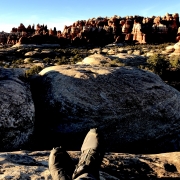How to Clean Up After Yourself, Before You Die | Healthy Aging Series: Part 17
I think about dying almost every day. I know it sounds a little morbid. It’s actually hard to not think about it. I’m not quite pushing 70 but I’m closer to 70 then I am to 60. I have signs that I’m aging and in fact dying. Graying hair. White whiskers. Organs and body parts not working as well as they used to. When my senior friends and I get together, those meetings turn out to be what some referred to as an “organ recitals.” Comparing the last lab work, or doctor visit, or health insurance.
What do I think about when I think about dying?
At times, I think about how I’m going to get rid of all the junk that I have accumulated over the years. I’ve begun to see my senior years is it time to start divesting myself of material things. That’s why Margaretta Magnusson’s book, “The gentle art of Swedish Death Cleaning,“ caught my eye. I’m sure we’ve all witnessed death cleaning. My mother cleaned up after my grandfather when he died. I wasn’t living at home at the time, but I remember mom talking about how painful it was. When my paternal grandfather died, I remember my father getting grandpa’s Remington 16-gauge shotgun. I think there was a lottery process that grandma used to distribute his things. That was Death Cleaning.
What is that cleaning? It’s the act of getting rid of the things that people accumulated during their life after they die. In some ways, it means cleaning up the mess that people made while they were living. Often, Death Cleaning falls on wives and daughters. They clean up after their family members when they die.
Magnusson suggest a different approach to death cleaning, one that shows compassion to the ones we leave behind. She advocates that we “clean up after ourselves before we die.” Here are her or her gentle guidelines for the art of doing your own death cleaning.
First, Magnusson reminds us that there is no sadness in thinking about or doing your own death cleaning. There is no sadness in visiting the things you accumulated one last time before finding them a new home. There is no sadness when you introduce your things to a new owner who will use them and appreciate them. I had a kayak and a mountain bike sitting in my garage. Neither one had been used for five years. I found them new homes with new owners that would use them and appreciate them. There was nothing sad about that desk cleaning.
Magnusson‘s second gentle guideline involves getting started. Getting started generally involves three phases:
PHASE ONE OF DEATH CLEANING
Go through your things. Do a survey. During this beginning phase you must get past your sentimentality. I don’t work with hoarders but I’m guessing that it’s sentimentality that creates the problem of accumulating all the things they have. It’s probably the answer to the question: Why do I keep my things and why did I accumulate them in the first place. As you do your survey of things, think about the boxes and boxes of things you have in your basement and in your garage and in your attic. The boxes of your children’s elementary school papers, and childhood toys, old Hallmark cards, childhood books, baby blankets, old tools, old dishes, the small appliances that you haven’t use for the past five years, bicycles you never ride, gifts you’ve never taken out of the boxes, clothing you never wear anymore, and the list can go on and on. Survey your storage unit if you have one.
Why are all the new storage units being built? They are going up everywhere! And they are full of the things you’ve accumulated because of sentimentality. And it is sentimentality that is creating this hold on you and prevents you from getting rid of them. People who invest in building storage unts are counting on it. Think about how much people are willing to spend to nurture their sentimentality. Typically, a small unit is $75-$100 per month. Phase One: survey all of the things that you’ve accumulated and keep in mind the reason why you still have them. Sentimentality.
PHASE TWO OF DEATH CLEANING
Sort your Things. In your mind start two piles: The things you want to keep and the things you want to find a new home. Magnusson goes through the survey and begins with clothing. I do this regularly. I pull out totes with clothes that I haven’t worn for the past year or two. I have “keep and giveaway” piles. The giveaway pile I bag up and take to Goodwill. I have three criteria and deciding what goes into which pile.
Do they fit anymore? Yes or no. Have I worn them in the past year? Yes or no. Would I wear them again? Do I still like them? Yes or no. Keep or give away.
Books. I love books and seeing them on bookshelves in my office. I have developed a new Death Cleaning policy for buying books. For every new book I buy I get rid of a book. I periodically go through my books and ask:
Why do I have this book? If it’s purely sentimental it’s going into the “giveaway“ pile.
I have a problem with coffee cups. I get cups from places I’ve visited. The Starbucks in San Francisco, Phoenix, Grand Canyon, make it hard for me to walk away without a cup. I’ve picked up cups in most national parks. I a new cup from the great Smoky Mountains national Park. I like to drink out of cups from places I’ve been. I’m kind of sentimental about that. But our kitchen cabinet can only handle so many cups. We have boxes of cups we never use. It’s time to sort through them. Two piles. Keep or give away.
PHASE THREE OF DEATH CLEANING
Get rid of the “find a new home“ pile. Magnusson has a couple of suggestions that make it a little easier on us as we confront our sentimentality. First, she suggests we take our time. This process can take place over a period of years. I’ve set aside some books my mother gave me for my granddaughters. I’ll give them the books. in a few years. I gave away four guitars to my sons. I think the important part of phase 3 is to begin the process of finding your things a new home. Her second suggestion is to start with less sentimental items and slowly move toward the more sentimental things. This helps “prime the pump.” You experience the satisfaction of getting rid of things that are less sentimental, and then you’re willing to try it with more sentimental things to experience the same satisfaction.
Stop accumulating things!
One of the best ways to begin cleaning up after yourself before you die is to avoid making a mess of things before you die.
Quit buying things you don’t need!
Quit accumulating sentimental things that have no practical value.
Start finding things a new owner by never giving them a new home in the first place.
Resist your sentimentality.
My Mother’s Death Cleaning
The day my mother died, I stayed in her little apartment. She didn’t have much. She had already given away most of her things. I had asked for her Gladys Tabor books a few years earlier and they had found a new home. I had given her Joseph Campbell’s, “Hero with a Thousand Faces,“ for her birthday a few years earlier. I did a little Death Cleaning and took it with me along with a knitted blanket and Clock. Her grandchildren were invited over a day or two later to claim the things they wanted.
Mom made it easy for us because she had cleaned up after herself before she died.
I have a lot of stuff, a lot of things. I’m guessing you do, too. Do the loving and considerate thing and start the process of Death Cleaning now.
Avoid making a mess in your life, that someone else will be forced to clean up, by walking away from the things you never needed in the first place. And give the rest away!
This is part seventeen in the Healthy Aging Series, written by Mark Neese, LCSW, BCBA. To see more entries in this series, click here.













